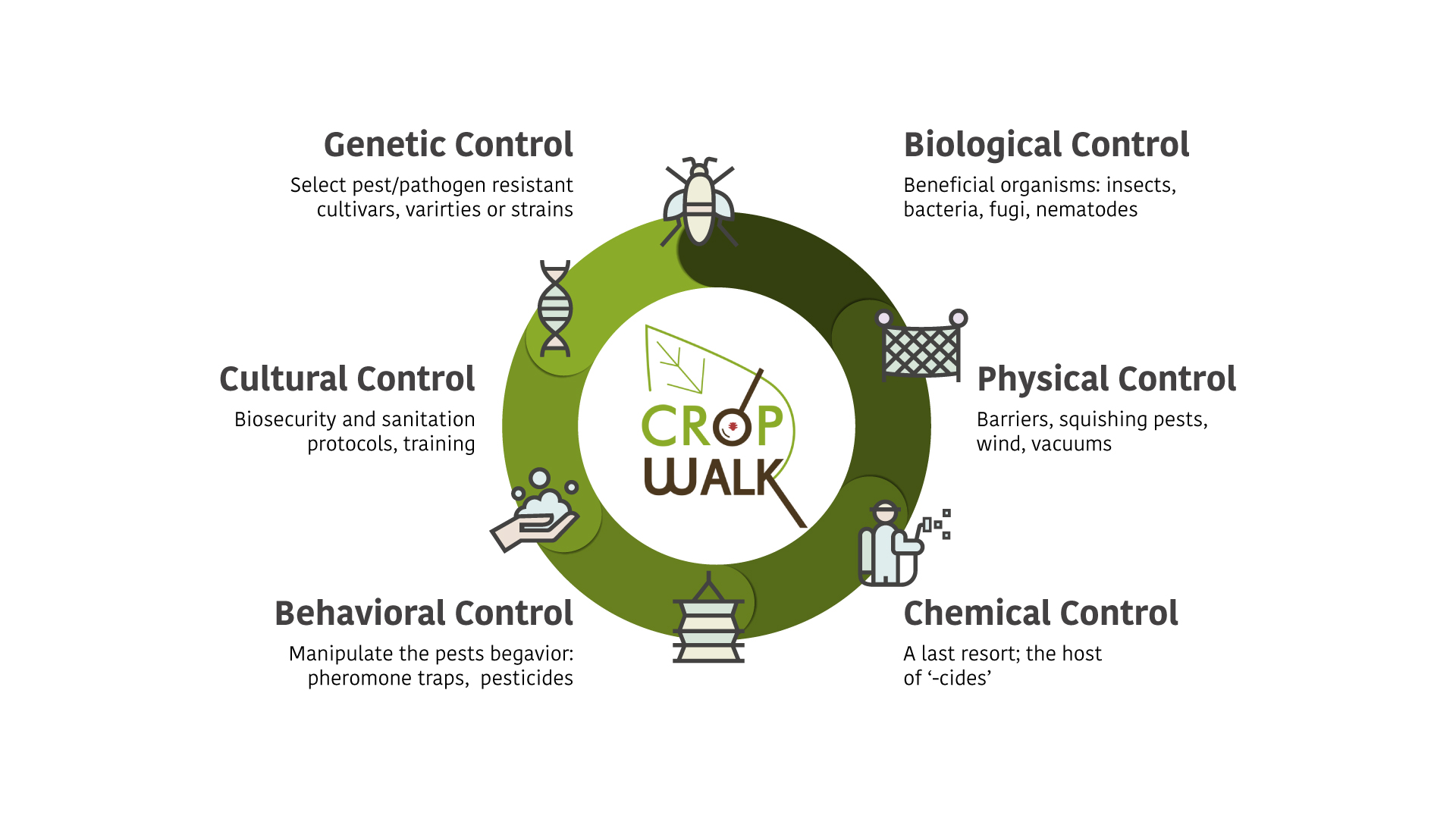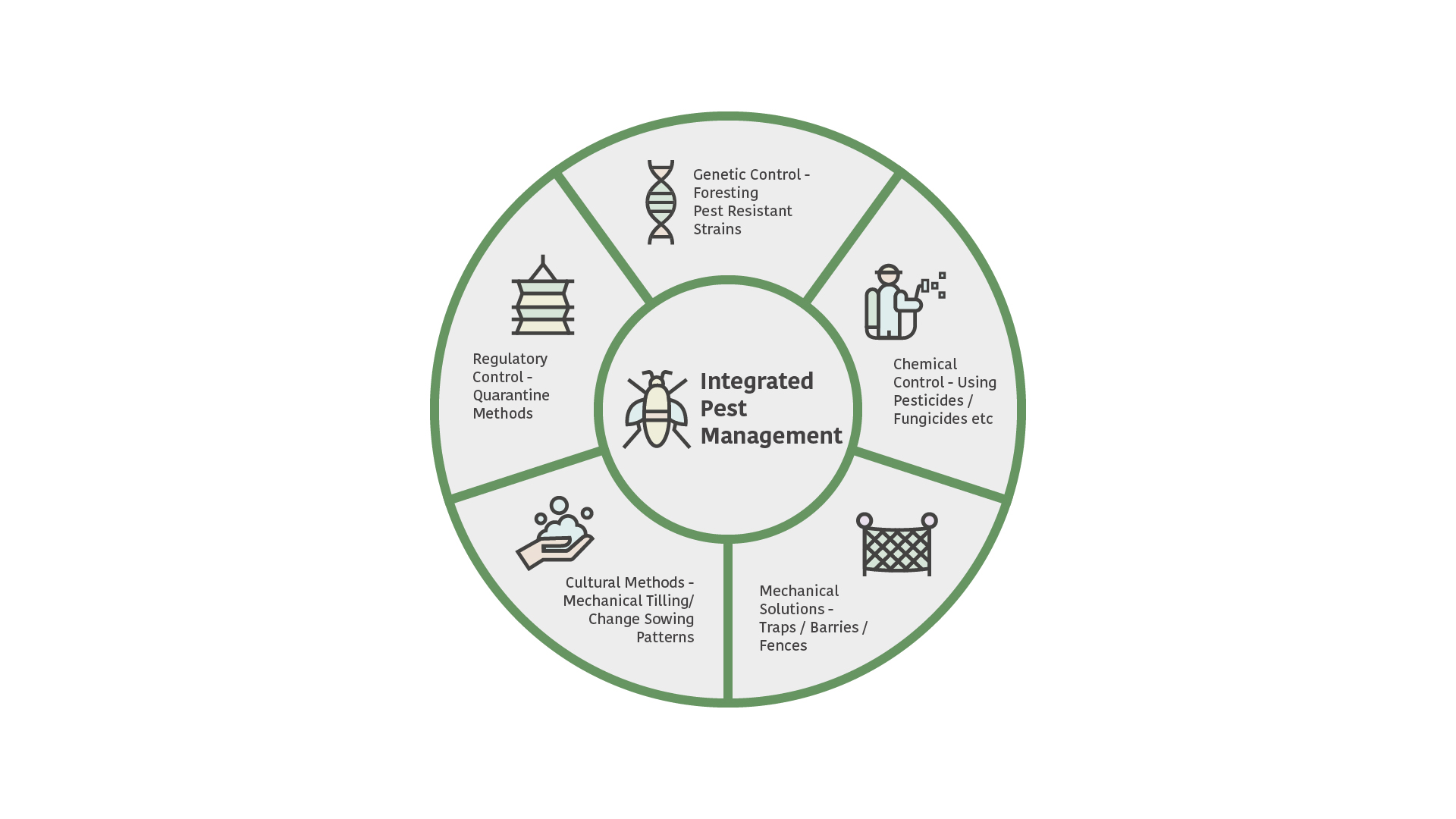Integrated Pest Management and Agriculture
Farmers all over the world have to deal with different kinds of challenges when it comes to crop management. One such challenge is pest control. In a report titled Scientific review of the impact of climate change on plant pests, an FAO study, it was found that pests destroy up to 40 % of crops globally.
It stands to logic therefore, that pest control or pest management is one of the top priorities for any farmer. In this domain, Integrated Pest Management or IPM has come to the fore as a system characterised by:
- Being eco-friendly
- Bringing together multiple techniques
- Addressing the long-term goal of pest management
- Minimising damage to non-target organisms
How does IPM work?
Conventional pest control techniques work by identifying the pest and applying a method to exterminate the same. This works for a short period of time and requires re-application of the extermination method over and over again.
IPM, however, looks at the long term and helps put in place an ecosystem that is disadvantageous to the pest. This process starts with sustained monitoring of the site and careful analysis to figure out the pest problem and the solution.

Different approaches
It is rather interesting to note that IPM does not rely on one single method to eliminate pests. Typically, one thinks of chemical sprays or pesticides when talking about pest control But, with IPM, it is a perfect medley of methods. Either a single method or a combination is used depending on the need of the hour.
There could be biological control which uses a pest’s natural enemy for population control. For instance, wasps are introduced in the field to control aphids. Physical control or mechanical solutions can help too. For instance, laying traps for rats or building fences to keep out foraging animals. There is cultural control too - sanitation techniques can help or even a complex system that rearranges planting dates or crop patterns.

IPM and India
One of the biggest challenges in going the IPM way is the length of time. But, when farmers realise that the results are worth the wait, then they get to enjoy savings and a healthier eco-system. For instance, farmers in the Dah-Hanu valley in Ladakh saw massive losses of their apricot crops to a yellow-tail moth in the year 2016. Adopting IPM helped them eliminate this pest completely and retain the lush green cover of apricot farms.
Organic farming seems to dovetail almost naturally with IPM. For instance, Organic Acre in Delhi has implemented multiple innovations and methods of producing healthier crops. Among other things, this farm also trains farmers on integrated pest management.
Maize crops in Jammu fall prey to armyworms. Very recently, the Centre for Agriculture and Bioscience International collaborated with the Department of Agriculture Production & Farmers Welfare, Jammu to deploy IPM to address this problem.
The modern age of agriculture has definitely brought about some massive changes in the way farming is carried out in India. And if a system like Integrated Pest Management can help bring about better health for consumers and the planet - then surely, it is a system worth adopting.



